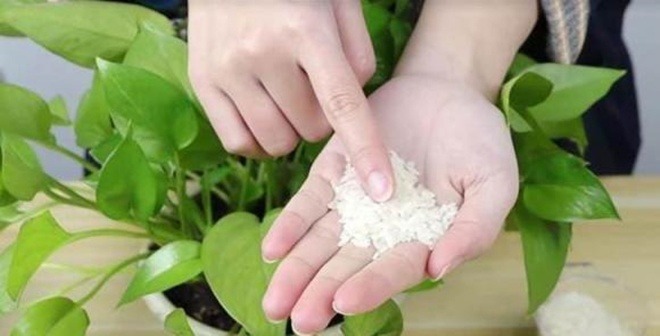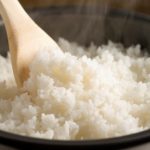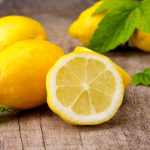Rice is an excellent first source
It is known for its nutritional value which includes protein, calcium, and iron. Besides its use as food, rice can also be used as a fertilizer for plants. Simply sprinkle some rice around the base of a plant, and once it decomposes, the nutrients will be available to nourish the plant.
You can also use rice water to water your plants. It is best to ferment rice water overnight before using it. Pour some rice water into a bottle, seal it, and leave it overnight. After fermentation, large molecules in the rice water will be broken down into smaller ones, making it easier for plants to absorb. This also creates beneficial bacteria, improving soil and helping plants to fight diseases. Once the rice water has fermented, dilute it with water at a ratio of 1:5 and water your plants.

Rice is known for its nutritional value which includes protein, calcium, and iron.
Potato peels are the second source
Potato peels have lots of starch, potassium, and other nutrients, making them a great organic fertilizer for plants. However, you should not bury potato peels directly in the soil or sprinkle them around plants, as the heat produced during decomposition can harm the plant.
Instead, you can ferment potato peels first. Simply place potato peels or a few sprouted potatoes in a bottle, add water, and let it sit for about a week. Then, you can use the fermented water to water your plants. Other than helping plants grow strong and lush, the potassium in potato peels encourages flowering and increases flower production.

Potato peels have lots of starch, potassium, and other nutrients, making them a great organic fertilizer for plants.
Eggshells are the final source
Although many people just throw away eggshells as waste, they are a valuable resource for your plants. Eggshells contain large amounts of calcium, phosphorus, and other nutrients that are extremely beneficial for plant growth. After cleaning and drying eggshells, you can crush them and mix them into the soil around your plants.
Crushed eggshells gradually release these nutrients into the soil, making them available to the plants. They also improve soil structure and increase soil drainage, which can prevent overwatering and resulting root rot and yellowing leaves.
Preparing Yellow Apricot Flowers to be in Full Bloom for Tet Celebration
As the Lunar New Year quickly approaches, many families are looking for guidance when it comes to selecting, purchasing, maintaining, and decorating with beautiful golden apricots. To ensure you get the most out of this lovely tradition, this article will provide you with specific instructions for choosing, caring for and decorating with yellow apricot blossoms. Learn how to make the most of this iconic symbol of the Tet holiday season!



































